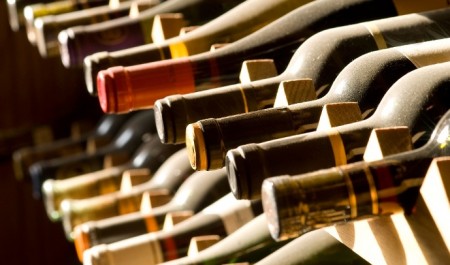Royal Imperial Liquor Store: $18 for $30 Worth of Wine (40% Off)
Today’s Groupon Edmonton Daily Deal of the Day: Royal Imperial Liquor Store: $18 for $30 Worth of Wine (40% Off)
Buy now for only $
18
Value $30
Discount 40% Off
Save $12
The Groupon Deal
- C$18 for C$30 toward of wine
This is a limited 5-day only sale that will expire at midnight on Wednesday, October 21, 2015.
Click here to buy now or for more details about the deal.
In a Nutshell
Merchant has wide selection of Cognac, foreign liquor, Tequila, Vodka, and Craft beer to choice for parties, get togethers, or just relaxing
The Fine Print
Promotional value expires 180 days after purchase. Amount paid never expires. May be repurchased every 90 days. Limit 2 per person, may buy 1 additional as a gift. Limit 1 per visit. Valid only for option purchased. Valid for wine only. Not valid with any other promotions or discounts. Must be 19 or older with valid ID. Merchant is solely responsible to purchasers for the care and quality of the advertised goods and services.
Royal Imperial Liquor Store
https://www.facebook.com/pages/Royal-Imperial-Liquor-store/348060888543935?sk=info&tab=page_info
9647-107 A Ave Northwest
Edmonton, AB T5H 0Z6
Lager: Brewed Cold, Aged Colder, Consumed on Ice
Beer lists aren’t complete without lagers. Check out Groupon’s guide to the world’s most popular type of beer—and why it’s different from ale.
Despite having a variety of colors, flavors, and effervescence, most of the world’s beers fall into one of two types—ale and lager. The difference begins during the fermentation process. As opposed to ale yeasts, which tend to float near the top of the tank, lager yeasts form closer to the bottom, where they thrive in colder temperatures—around 50 degrees Fahrenheit. After fermentation, most lagers often age for months at around 40 degrees, resulting in a clean, pale brew that’s best enjoyed chilled.
Even among lagers, the flavor and style of beers vary wildly. Generally made with delicately roasted malts and little hops, North American lagers tend to be pale and light, ideal for sipping on a hot summer day or while waiting out a blizzard in a farmer’s greenhouse. German lagers, by contrast, include varieties such as bock, dunkel, and märzen—cold-weather lagers with darker malt, more hops, and higher alcohol content. An eisbock, for example, has almost nothing in common with an American-style lager; as it brews, the beer’s temperature dips below freezing as the yeasts consume the last of the sugar, yielding a beer whose malty, robust body smolders like a campfire in one’s belly.
Until around the mid-19th century, lager was almost exclusively brewed in Germany. Traders found it difficult to keep the fragile, bottom-fermenting yeasts used in lagers alive during the trip to the New World, and the colder temperatures the yeast demanded meant breweries had to be located in regions where ice was naturally plentiful. Today, however, almost all of the world’s best-selling beers are lagers—a demand that has bred new breweries throughout the planet. Skol lager is massively popular in Brazil, Holland’s Heineken is popular virtually everywhere, and Americans consume endless quantities of Bud Light, Pabst Blue Ribbon, Miller, and Corona.
Click here to buy now or for more information about the deal. Don’t miss out!

